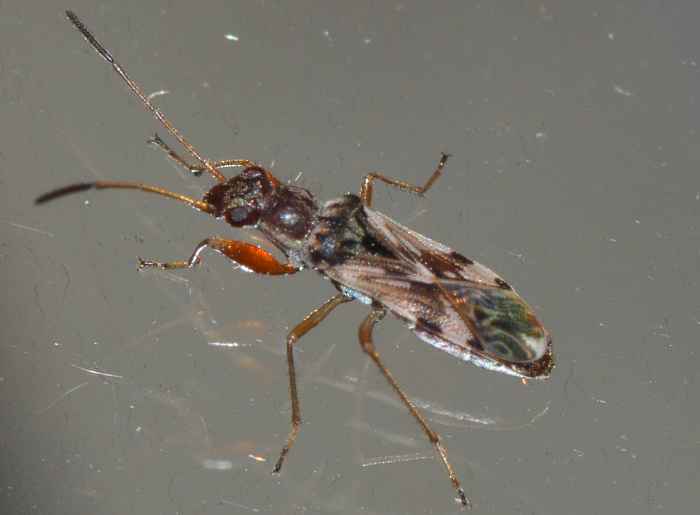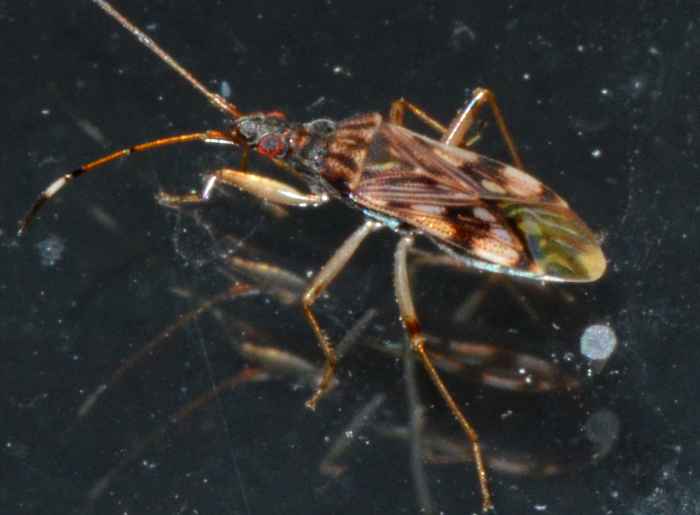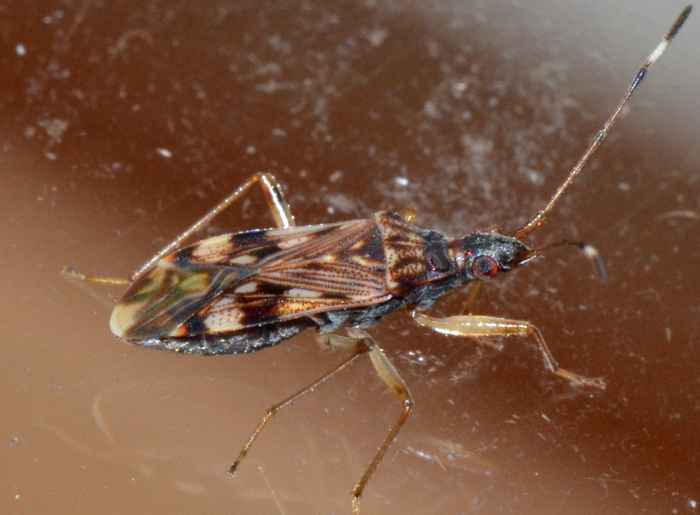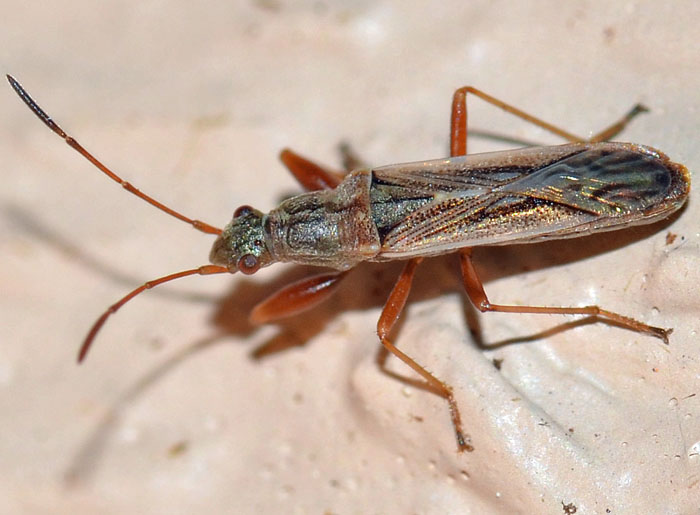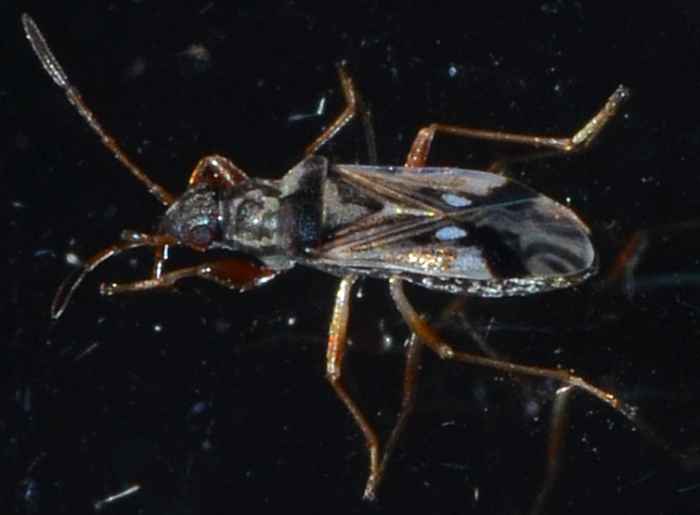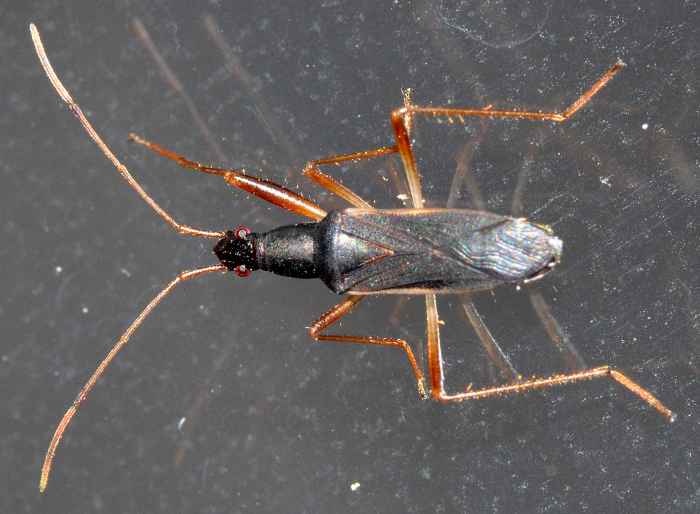 Cnemodus hirtipes. | This dirt-colored seed bug is Cnemodus hirtipes which can only be found in Florida. The genus has one other species in the US. The distinguishing mark is that C. hirtipes has many/more hairs on its femora and tibiae. This photo has been the second entry for the species in bug guide. bug guide (this photo): http://bugguide.net/node/view/631064 J. A. Slater and R. M. Baranowski, The Lygaeidae of Florida (Florida Dept. of Agriculture, Gainesville, 1990): http://ufdc.ufl.edu/UF00000094 | ||
 Heraeus plebejus. | This dirt-colored seed bug was attracted by the lights of our patio lamps. The head is dull blackish rather than polished and the eyes are placed about midway along the head margin. The genus has five species in North America. It seems that this little guy lost one of its legs. bug guide (this photo): http://bugguide.net/node/view/1121196 | ||
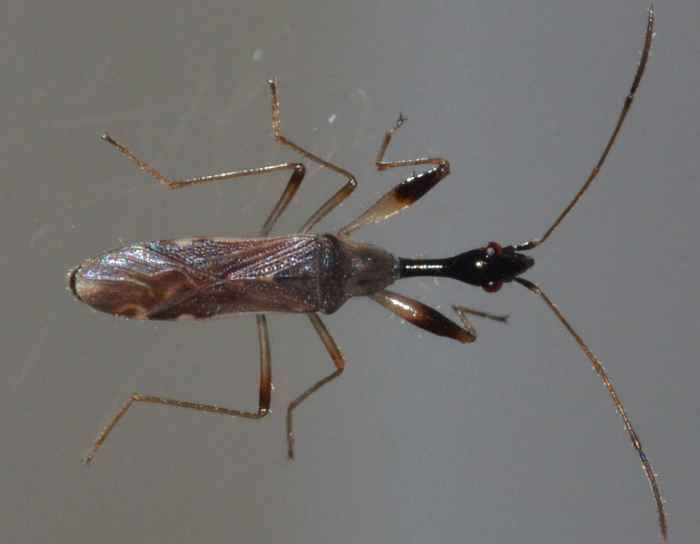 Myodocha serripes (Long-Necked Seed Bug). | A member of the Dirt-colored Seed Bug family. This is a Long-necked Seed Bug (Myodocha serripes). Adults of this species are attracted to lights. Their head is black and longer than pronotum; the front femora is inflated bearing spines; the legs are yellowish with black "knee" joints. They can become a pest of strawberries. There are two species in Florida (one in the other states). The base of the other species' fourth antennal segment is not black but rather a pale white. bug guide (this photo): http://bugguide.net/node/view/576587 American insects: http://www.americaninsects.net/ht/myodocha-serripes.html | ||
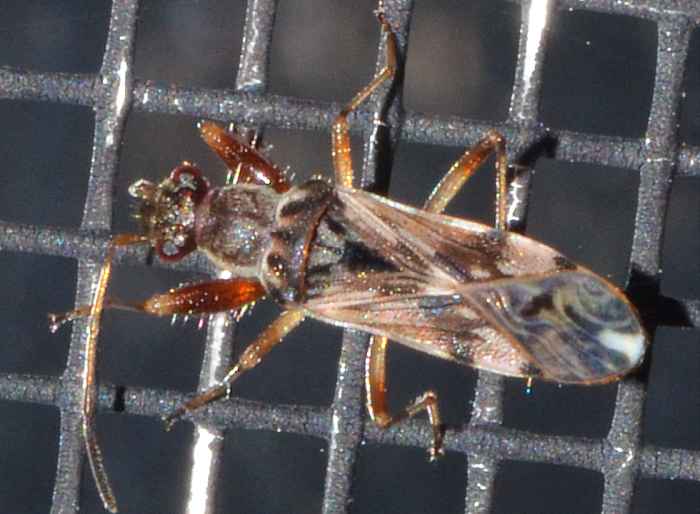 Neopamera albocincta. | The base of last antennal of Neopamera albocincta is rather pale and its size is under 6 mm. It can be found in most states in the Eastern US but appears most common in Florida. The genus has three species north of Mexico of which I already found two in our yard. The missing third one is N. neotropicalis which in the US is only found in Florida. bug guide (this photo): http://bugguide.net/node/view/648633 | ||
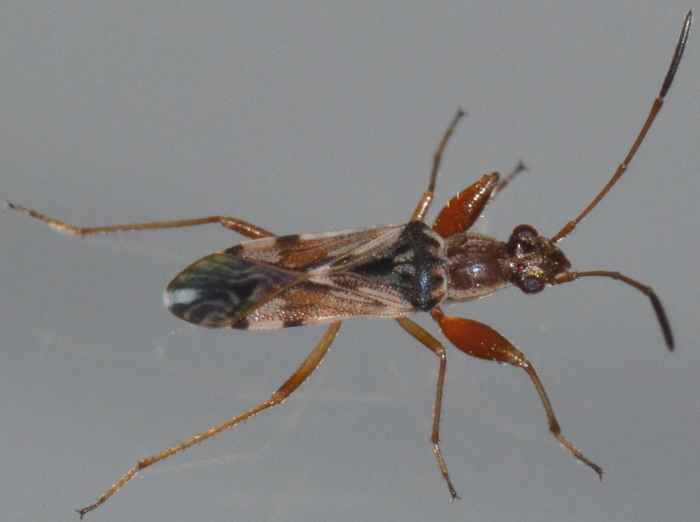 Neopamera bilobata. | Neopamera bilobata feeds on broad variety of plant seeds and is found mainly in disturbed habitats. It is among the most common insects in Southeastern US. The photo below was taken on 08/02/12.
bug guide (this photo): http://bugguide.net/node/view/581520 R. L Rodriguez, Rev. Biol. Trop., 46, 837, 1998: https://pantherfile.uwm.edu/rafa/www/pdfs/Rodriguez%201998c.pdf bug guide (small photo): http://bugguide.net/node/view/683791 | ||
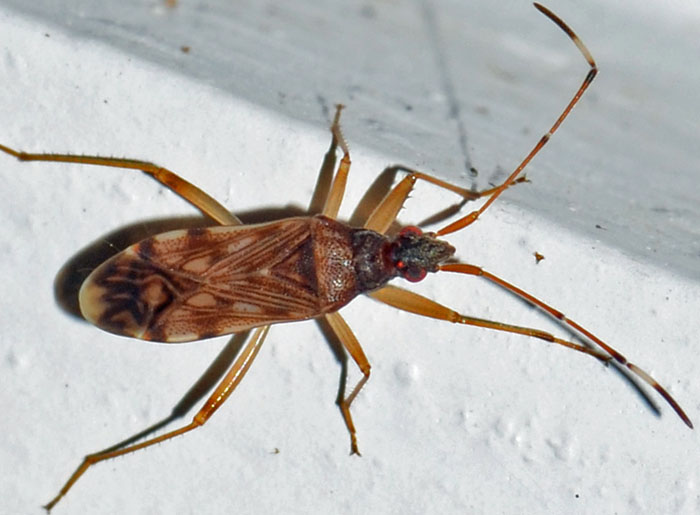 Ozophora picturata. | A characteristic feature of Ozophora picturata is its white basal part of fourth antennal segment. The photos below show different specimens (found on 05/27 and 07/10/12).
bug guide (this photo): http://bugguide.net/node/view/974452 Slater, Baranowski Florida Entomol. 66, 416 (1983): http://journals.fcla.edu/flaent/article/view/57848/55527 bug guide (small photo): http://bugguide.net/node/view/671924 | ||
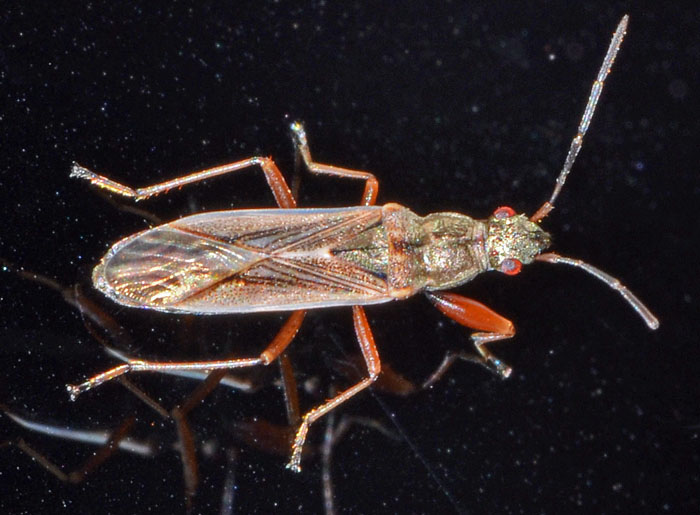 Paromius longulus. | Paromius longulus can be found throughout the Southeastern US. It has been reported to be an agricultural pest on rice. The small photo was taken on 08/16/14 at 11 pm.
bug guide (large photo): http://bugguide.net/node/view/689277 bug guide (small photo): http://bugguide.net/node/view/979165 | ||
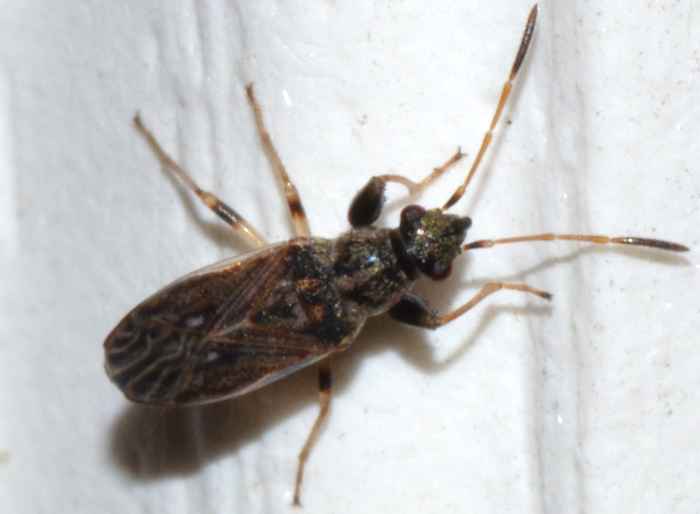 Pseudopachybrachius basalis. | Pseudopachybrachius basalis can be found in most of eastern and central North America especially in areas with Panicum grasses. bug guide (this photo): http://bugguide.net/node/view/656430 | ||
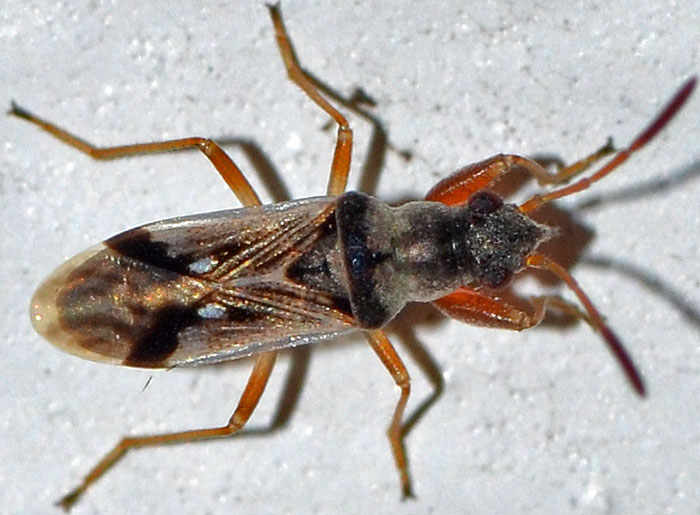 Pseudopachybrachius vinctus. | Pseudopachybrachius vinctus feeds on a variety of seeds especially grass seeds. This species is wide spread in the Southeast. The small photo was taken on 07/30/12.
bug guide (this photo): https://bugguide.net/node/view/1445443 bug guide (small photo): http://bugguide.net/node/view/682405 |

